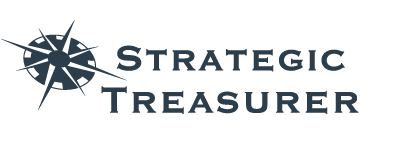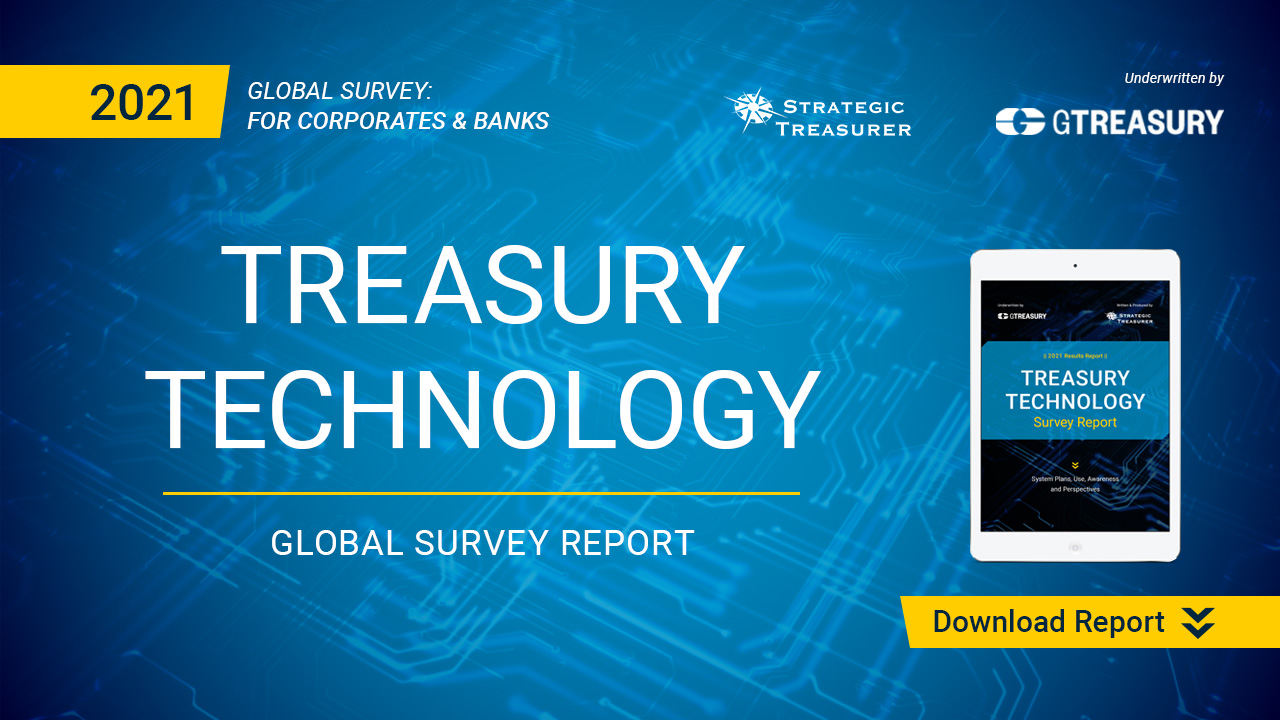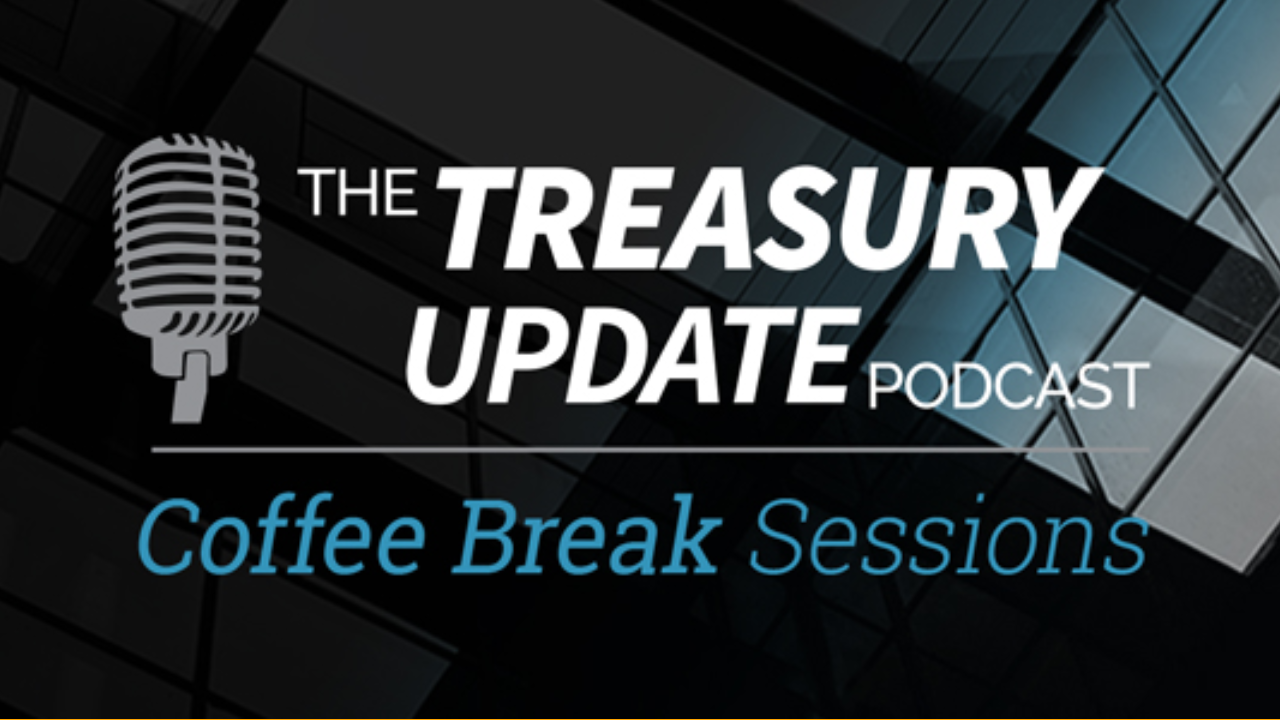
Session 56
Coffee Break Session:
What Is Cash Conversion Cycle?
Host:
Alexa Cook, Strategic Treasurer


Speaker:
Craig Jeffery, Strategic Treasurer


Episode Transcription - (Coffee Break Session Series) - Episode 56 - What is Cash Conversion Cycle?
Alexa Cook 0:04
Hey guys, welcome to The Treasury Update Podcast Coffee Break session, the show where we cover foundational treasury topics and questions in about the same amount of time it takes you to drink your coffee. This is your host Alexa and I’m joined today with Craig Jeffery, Managing Partner of Strategic Treasurer. Welcome back, Craig.
Craig Jeffery 0:23
Greetings, Alexa, Happy Winter.
Alexa Cook 0:25
Yeah, thanks. I’m up in Michigan. So, it’s definitely colder here than it is down in Atlanta.
Craig Jeffery 0:30
It’s 58 degrees.
Alexa Cook 0:31
Yeah, we haven’t seen the 50s in a while. So, today we’re going to kind of go back to call it our roots since the first podcast we covered was What is Cash? and today we’re going to take a look at what is the cash conversion cycle. So, Craig, can you let us know what the cash conversion cycle is?
Craig Jeffery 0:49
Yeah, the cash conversion cycle is a is a pretty cool name. When you think of a cycle you think of a circle. And that’s how it’s often shown and drawn. It’s the process of putting cash into the business until it spits back out cash. So, you put cash into a business for inventory. And the goods are finished. You sell them and then once you sell them, they become receivables. And once you collect your receivables you take your cash back out of the business. So, the cash conversion cycle is the cycle of moving things through inventory counts payable, accounts receivable till it comes back out as cash. So that’s the broader definition of the cash conversion cycle.
Alexa Cook 1:32
That’s great. I feel like you kind of started to answer the next question, or maybe I’m wrong, but it is what are the components that are making up the cash conversion?
Craig Jeffery 1:40
Most of it was covered there’s a couple other areas of detail I think we want to get into so not every business has inventory. You can think of we don’t manufacture something we’re a service industry. We have no inventory, almost no inventory. So, there are components where that doesn’t take place. There might be some businesses that have very little receivables because they collect everything at the point of sale when they’re making the sale. They’re immediately collecting funds for that they don’t have any receivable like a grocery store may sort of act like that way because they’re collecting cash or credit card activities. There’s only the delay in getting the cash from the different card company so not everyone has all these three components. Not everyone has these three components that take a number of days. So, it varies by business and organization.
Alexa Cook 2:32
So, if we jump into a little bit more technical question and that is how do you calculate cash conversion?
Craig Jeffery 2:38
I hope I don’t have to say the formula, but I’m assuming because this is a podcast, we can’t throw stuff up on the screen that I should probably just describe some of it. So, the measure of cash conversion is really a way of measuring the process efficiency. It’s not cash use. It’s not the measure of cash use, but it’s how efficient is your business process When you put money into it to do your different your services, you create products, you sell them and you collect on them, each of those steps takes time. And so, it’s a measure of process efficiency. There’s a derivative of that that shows how it uses and absorbed cash but it’s a measure of process efficiency. I’m collecting in 70 days when my terms are 30. You’re not good at that part of the cash conversion process. I’ve got, you know, nine years’ worth of inventory, that can be a problem. That’s the broader purpose for the cash conversion measure. It’s a measure of days as a measure of efficiency, broadly defined. So, when you look at those different areas like inventory, AP and accounts receivable, and I recognize this as a podcast you might be running or working out. Days inventory outstanding, days payable outstanding, day sales outstanding are the three different measures. Now these are taking the amount of value or funds you have tied up in inventory to determine the number of days that you have of inventory, or the number of days of payables and for those two inventory and payables they’ll use the cost of goods sold. And there’s a couple other elements in terms of how we measure that, but beginning inventory ending inventory during that period, etc. So, I’ll refer you to some charts or materials for that, but the uses cost of goods sold, so that it’s, a you have this much inventory this is how much capital you have tied up in your inventory. Now day sales outstanding uses sales in its calculation as opposed to cost of goods sold. So, when you’re converting things, todays it’s based off of the closest measure and if you’re into working capital, you probably understand what I’m talking about immediately. But if you’re new or you don’t like formulas as much, you think about payables, well I’m paying for what I bought, let’s say for inventory. I spent a million dollars’ worth of inventory, and I’m paying that out. You know, I get rid of inventory in two months. So, a million dollars represents you know, 60 days’ worth of inventory. And that’s determined by what the cost is. But the use of day sales outstanding should be reflective of what I sell stuff for. So, if I took that million dollars of inventory, and now I’m selling it for 1.5 million, how much is my receivables reflective of an individual day. It’s still reflective of sales, not cost of goods sold. Because hopefully we have a margin on things. So cost of goods sold should be less than what we’re selling it for if we want to be in business. So, each of these is a measure of process efficiency. So, if you add these days up, you have the overall days of your cash conversion cycle. How long does it take to convert it? And that’s a measure of efficiency. It’s not necessarily a measure of how much cash would be used because you’re growing an extra day of sales will cost you more cash then increasing a days payable will generate more cash because days payable might be I can’t remember the example but would be two thirds of what your sales would be or your receivable for when you sell it. So, there’s some measures there, so it’s about process efficiency. Not cash used directly.
Alexa Cook 6:37
That makes sense. And I know a lot of the numbers you were just referring to all seem to be positive numbers that you know the closer it is to zero is probably better. So, like the inventory turns or day sales. Now, can this cash conversion number be negative? And what would that mean?
Craig Jeffery 6:56
Well, it can be negative and generally people are trying to get the number down more if they want to be efficient in their process. But that’s not the only driver of why you might have, if you drove inventory down to zero, you might be like wow, I’m really efficient. But you also may be given up a ton of sales. I always think of a time when our washing machine broke and it was Saturday night and I went to one place they didn’t have a washing machine or they couldn’t deliver it rather they couldn’t deliver it for like I don’t know, five or six days. And I went to another place that could deliver it on Monday morning. So, I bought it from the place that could deliver it Monday morning because I didn’t want to suffer the consequences of not having a working washing machine and deal with that. So, while you can reduce your inventory, there can be negative side effects, but to your point about can it be negative, it can, and I’ll just give you a quick couple of quick examples. You know if you have a very fast process for converting cash like you pay much slower than you receive, you’re in essence leveraging someone else’s balance sheet to fund your business. Couple examples, one really old and one that’s current, you know, just in time inventory was all the rage before. We’ve heard of all these supply chain issues. So, popular examples, some of the computer companies like Dell, they would have a giant trucks would back up and as they got orders, they would pull inventory off the trucks and then they would pack them in there and ship the computers out. Well, they would collect the money via card, instantly. And they wouldn’t take ownership of the inventory until they needed it. So, when they pulled it off the processor, the hard drive whatever then they would be buying in their let’s say their payment terms with 30 days. They were collecting like essentially instantly, so they have a negative 30 day turn for they basically had no receivables, and their inventory was zero. And their payables outstanding would be positive but that provides, you know this negative cash conversion cycle because you’re generating cash to the process. So that’s one the other is think about airlines. You got to pay for your ticket before you go. They haven’t bought the gas or paid all the different expenses they have for it. So, they’re collecting all this cash ahead of time. Maybe it’s, I don’t know what the average is and the amounts but they’re collecting it beforehand before they have to disperse it to pay for the activity. So, they’re typically generating a negative cash conversion cycle. They’re extremely efficient because of how it’s set up.
Alexa Cook 9:41
Okay, that makes sense that I really like that example of the airline since I guess kind of talking through that I was thinking that you know, a negative cash conversion number was always a negative but your airlines and in themselves are really a good example of an okay, negative cash conversion number. So that’s great, Craig. Just to do a quick recap of today’s topic, What is the Cash Conversion Cycle? It’s really the cash that’s in the business. You know, from the point of it going into the business until it’s spit back out, and you know, that could be through inventory, finished goods or services, items that are sold, pending receivables, and then making our way back to cash. To do a measure of this cash conversion we’re really looking at the process efficiency so you can look at different pieces within the cash conversion cycle or the entire thing in itself. And it’s again, really, how efficient is that business? Was there anything else you wanted to add to that quick recap, Craig?
Craig Jeffery 10:35
No, that’s great. Thanks so much for talking through this.
Alexa Cook 10:38
To all of our listeners. Thanks for tuning in this week. Make sure you join us back every first and third Thursday of the month for a new episode. And thank you Craig for joining me again today to cover the cash conversion cycle.
Craig Jeffery 10:50
My pleasure.
OUTRO 10:55
This podcast is provided for informational purposes only, and statements made by Strategic Treasurer LLC on this podcast, are not intended as legal, business, consulting, or tax advice. For more information, visit and bookmark strategictreasurer.com.




